Module 3 - Benjamin-Mills
Module 3 - Benjamin-Mills
Module 3 - Benjamin-Mills
Create successful ePaper yourself
Turn your PDF publications into a flip-book with our unique Google optimized e-Paper software.
EP6.4<br />
Using the iodine clock<br />
method to find the order<br />
of a reaction<br />
This activity illustrates another way in which the<br />
initial rate method can be used to determine the<br />
order of a reaction with respect to one of the<br />
reactants.<br />
Requirements<br />
●<br />
0–110∞C thermometer<br />
● boiling tubes (5)<br />
●<br />
test-tubes<br />
● burettes (or graduated pipettes 1 cm 3 , 2 cm 3 and 5 cm 3 )<br />
● potassium iodide solution, 1.00 mol dm –3 (15 cm 3 )<br />
● potassium peroxodisulphate(VI) (K 2<br />
S 2<br />
O 8<br />
) solution,<br />
0.0400 mol dm –3 (10 cm 3 )<br />
● sodium thiosulphate (Na 2<br />
S 2<br />
O 3<br />
) solution,<br />
0.0100 mol dm –3 (10 cm 3 )<br />
● freshly made starch solution (5 cm 3 )<br />
● stopwatch<br />
potassium peroxodisulphate(VI)<br />
solution<br />
CARE Eye protection<br />
must be worn.<br />
HARMFUL<br />
WEAR EYE<br />
PROTECTION<br />
OXIDISING<br />
About the reaction<br />
Peroxodisulphate(VI) ions and iodide ions react together in solution to form<br />
sulphate(VI) ions and iodine.<br />
S 2<br />
O 8 2– (aq) + 2I – (aq) Æ 2SO 4 2– (aq) + I 2<br />
(aq)<br />
Both reactants and the sulphate ions are colourless, so the progress of the<br />
reaction can be measured by following the colour of the iodine produced. The<br />
iodine can be detected even more clearly by placing some starch in the reaction<br />
mixture: iodine forms an intense blue-black complex with starch.<br />
One way of measuring the initial rate of the reaction is to measure how long<br />
the reaction takes to produce a small, fixed amount of iodine. By answering the<br />
questions which accompany this activity, you can work out what amount of<br />
iodine has been chosen here, and what fraction of the extent of reaction this<br />
represents.<br />
You can make the time taken to produce a particular amount of iodine really<br />
obvious if you add thiosulphate ions to the reaction mixture at the start.<br />
Thiosulphate ions turn iodine back to iodide ions.<br />
2S 2<br />
O 3 2– (aq) + I 2<br />
(aq) Æ S 4<br />
O 6 2– (aq) + 2I – (aq)<br />
So, no starch-iodine colour will appear until all the thiosulphate has been used<br />
up. What you see is a colourless reaction mixture sitting there as though nothing<br />
is happening; then, suddenly, it turns blue. If you measure how long that takes,<br />
you know how long it took to use up all the thiosulphate and, therefore, how<br />
long it took to produce the equivalent amount of iodine.<br />
This method of studying reaction rates is sometimes called the clock method,<br />
and this experiment is an example of an iodine clock experiment. You are going<br />
to use it to investigate how the reaction rate depends on the concentration of<br />
iodide ions in the reaction mixture.<br />
You may like to practise your IT skills and make use of graph-plotting<br />
computer software to plot your results. It is usually best, however, to draw the<br />
best-fitting line or curve by hand.<br />
„ Salters Advanced Chemistry 2000 – see Copyright restrictions<br />
191



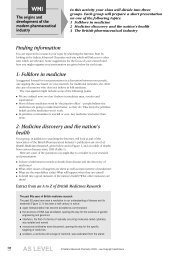
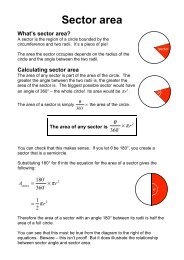
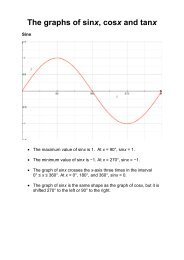
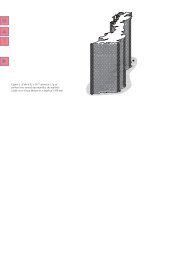

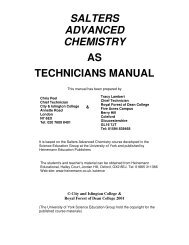



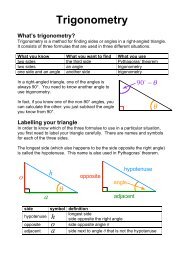
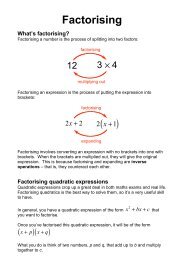
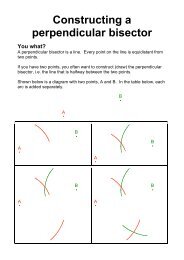

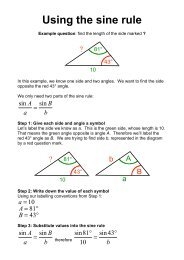
![ISI Web of Knowledge [v.4.10] - All Databases Results - Benjamin-Mills](https://img.yumpu.com/39253071/1/184x260/isi-web-of-knowledge-v410-all-databases-results-benjamin-mills.jpg?quality=85)